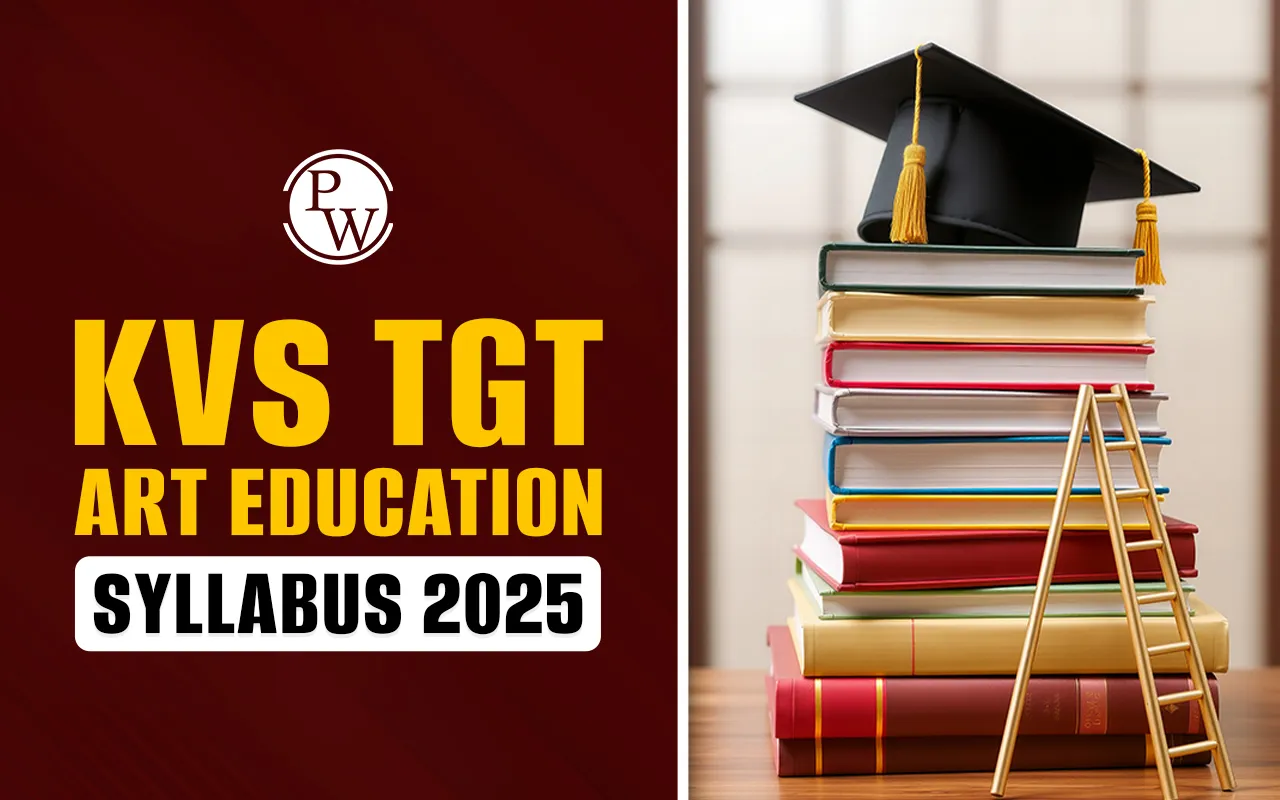

KVS TGT Art Education Syllabus 2025 is an important document for all candidates who want to become Art teachers in Kendriya Vidyalayas. It helps them understand what they must study before appearing for the exam. The KVS TGT Art Education Syllabus 2025 also explains the major art styles, famous paintings, sculptures, and architectural works from ancient to modern India. The syllabus also ensures that every future teacher is ready to teach students with confidence and knowledge.
KVS TGT Art Education Syllabus 2025 Overview
KVS TGT Art Education Syllabus 2025 provides all the details related to what candidates must learn before the exam. It covers Indian art from the earliest Indus Valley period to modern times.
-
The syllabus includes sculpture, painting, architecture, bronzes, miniature schools, and the works of famous artists.
-
It also explains techniques, materials, themes, and cultural history, helping future teachers understand how Indian art has grown over thousands of years.
-
Each unit focuses on a different art period or style. This helps candidates study step by step without feeling confused.
-
The KVS TGT Art Education Syllabus 2025 also acts as a guide for revision, lesson planning, and classroom teaching.
KVS TGT Art Education Syllabus 2025
KVS TGT Art Education Syllabus 2025 covers a wide range of Indian art forms. It focuses on drawing and Painting, Sculpture, Architecture, Miniature Painting, Modern Art, and the History of Indian Art from the Indus Valley period to the present age.
KVS TGT Art Education Syllabus 2025 is designed to build strong artistic understanding in future teachers. A detailed explanation of the topics included in the syllabus is provided below:
Art of the Indus Valley (2500–1500 B.C.)
This section includes the earliest art forms discovered in India. Students must learn:
-
Harappa and Mohenjo-daro sites
-
Terracotta and bronze sculptures
-
Famous works such as:
-
Dancing Girl
-
Male Torso
-
Mother Goddess
-
The Bull Seal
-
Painted clay pots and other artworks
Buddhist, Jain, and Hindu Art (3rd Century B.C.–8th Century A.D.)
This part explains how religion influenced early Indian art. It forms the base of classical Indian art styles. Candidates must study:
-
Mauryan, Shunga, Kushana, and Gupta period art
-
Lion Capital from Sarnath
-
Chauri Bearer
-
Gandhara and Mathura school sculptures
-
Jain Tirthankara sculptures
-
Ajanta cave paintings and sculptures
Temple Sculpture, Bronzes, and Indo-Islamic Architecture (6th–13th Century A.D.)
The KVS TGT Art Education Syllabus 2025 gives special attention to Indian temple art. Key topics include:
-
Pallava, Rashtrakuta, Chola, Chandela, and Ganga dynasty works
-
Famous sculptures such as:
-
Descent of the Ganga
-
Ravana Shaking Mount Kailash
-
Trimurti of Elephanta
-
Lakshmi Narayana
-
South Indian bronzes like Nataraj and Devi
-
Qutub Minar, Taj Mahal, and Gol Gumbaz under Indo-Islamic architecture
Rajasthani and Pahari Schools of Miniature Painting (16th–19th Century A.D.)
These schools are known for their bright colours, fine details, and beautiful themes. This unit helps students study traditional miniature painting styles. The syllabus includes:
-
Mewar, Bundi, Jodhpur, Bikaner, Kishangarh, and Jaipur schools
-
Popular paintings such as:
-
Maru-Ragini
-
Chaugan Players
-
Bani-Thani
-
Krishna-Gopis
-
Raga Megha
Mughal and Deccan Schools of Painting (16th–19th Century A.D.)
The KVS TGT Art Education Syllabus 2025 covers important royal art schools:
Mughal School:
-
Origin and development under Akbar
-
Realistic and detailed paintings
-
Famous works like:
-
Krishna lifting Govardhan
-
Babur crossing Sone
-
Jahangir with Madonna
-
Falcon on a Bird Nest
Deccan School:
-
Rich colours and Persian influence
-
Works like Raga Hindola and Chand Bibi Playing Polo
Bengal School and Modern Trends in Indian Art
This part introduces modern Indian creativity. Students must study:
-
Beginning of modern art
-
Works by Raja Ravi Varma
-
National Flag evolution
-
Bengal School painters like Nandlal Bose and Abanindranath Tagore
-
Modern painters like:
-
Jamini Roy
-
Amrita Sher-Gil
-
M.F. Hussain
-
Sculptures by D.P. Roychowdhury and Ramkinkar Baij
-
Graphic printmaking works by Indian artists
KVS TGT Art Education Syllabus PDF Download
The complete KVS TGT Art Education Syllabus 2025 PDF can be downloaded from the official KVS website. Candidates must always keep the PDF because it is required for regular revision. The PDF contains exact topics, artwork names, periods, and details that help in exam preparation.
| KVS TGT Art Education Syllabus PDF 2025 Download | |
| Official Art Education Syllabus PDF | Download PDF |
KVS TGT Art Education Exam Pattern
Understanding the exam pattern is very important for candidates preparing for the TGT Physical and Health Education test. The written exam follows a structured design, and questions come from various sections.
| KVS TGT Art Education Exam Pattern | ||
| Sections | Subjects | Marks |
| Part I | General English and Hindi | 20 |
| Part II | General Knowledge and Current Affairs | 10 |
| Part III | Reasoning Ability | 10 |
| Part IV | Computer Literacy | 10 |
| Part V | Subject (Art Education) | 100 |
| Total | 150 | |
Marking Scheme
-
Each correct answer carries 1 mark.
-
No negative marking is expected (as per previous years).
-
The total time for the exam is 2 hours and 30 minutes.
